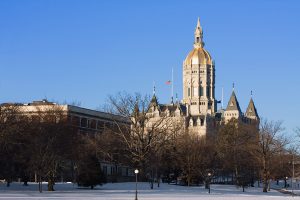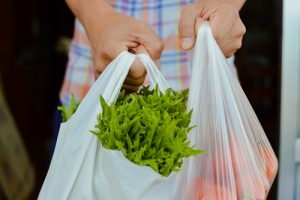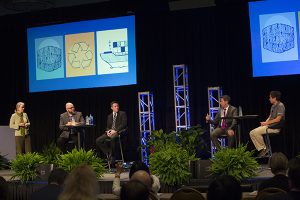
Last year presented an upheaval in the global recovered plastics market, and the impacts continue to roll in. Three experts recently shared their thoughts on the specific causes of the volatility.
 Colin Staub was a reporter and associate editor at Resource Recycling until August 2025.
Colin Staub was a reporter and associate editor at Resource Recycling until August 2025.
Last year presented an upheaval in the global recovered plastics market, and the impacts continue to roll in. Three experts recently shared their thoughts on the specific causes of the volatility.
 Officials in China have announced an enforcement campaign to implement the country’s new import restrictions.
Officials in China have announced an enforcement campaign to implement the country’s new import restrictions.
 Chinese recycling executives see a promising outlook for Asian companies looking to invest in the U.S. as a result of China’s import restrictions.
Chinese recycling executives see a promising outlook for Asian companies looking to invest in the U.S. as a result of China’s import restrictions.

Extended producer responsibility rose to the forefront of debate in Connecticut as a strategy to reduce packaging waste in line with state mandates. A committee tasked with advising lawmakers during the coming legislative session recently split on the strategy, but the majority advised against it.
 Two recently released reports provide snapshots of film and non-bottle rigid plastics recycling. The material types have seen collection gains but processing challenges.
Two recently released reports provide snapshots of film and non-bottle rigid plastics recycling. The material types have seen collection gains but processing challenges.
 During a plenary session at the Plastics Recycling Conference last week, major exporters opened up about alternative markets, quality improvements, and operational and contractual changes they’ve made in response to China’s import restrictions.
During a plenary session at the Plastics Recycling Conference last week, major exporters opened up about alternative markets, quality improvements, and operational and contractual changes they’ve made in response to China’s import restrictions.

Credit: Nerijus Juras/Shutterstock
A North American recycling operation will open an e-plastics-focused facility in response to Chinese import restrictions.

Credit: On Ter/Shutterstock
Municipal programs are often short on funds, and it’s easy for recycling outreach to fall on the back burner amid budget constraints. East Hartford, Conn. recently took action on the issue by partnering with a plastics industry initiative.

Credit: MAGNIFIER/Shutterstock
Chinese authorities have issued the first five rounds of recyclable-material import permits for 2018. Compared with 2017, the country has allowed in substantially less recovered plastic and approved permits for far fewer companies across all material types.

Credit: Nguyen/Shutterstock
Five consumer-products companies recently made public commitments to produce recyclable packaging or increase their recycled content by 2025.

